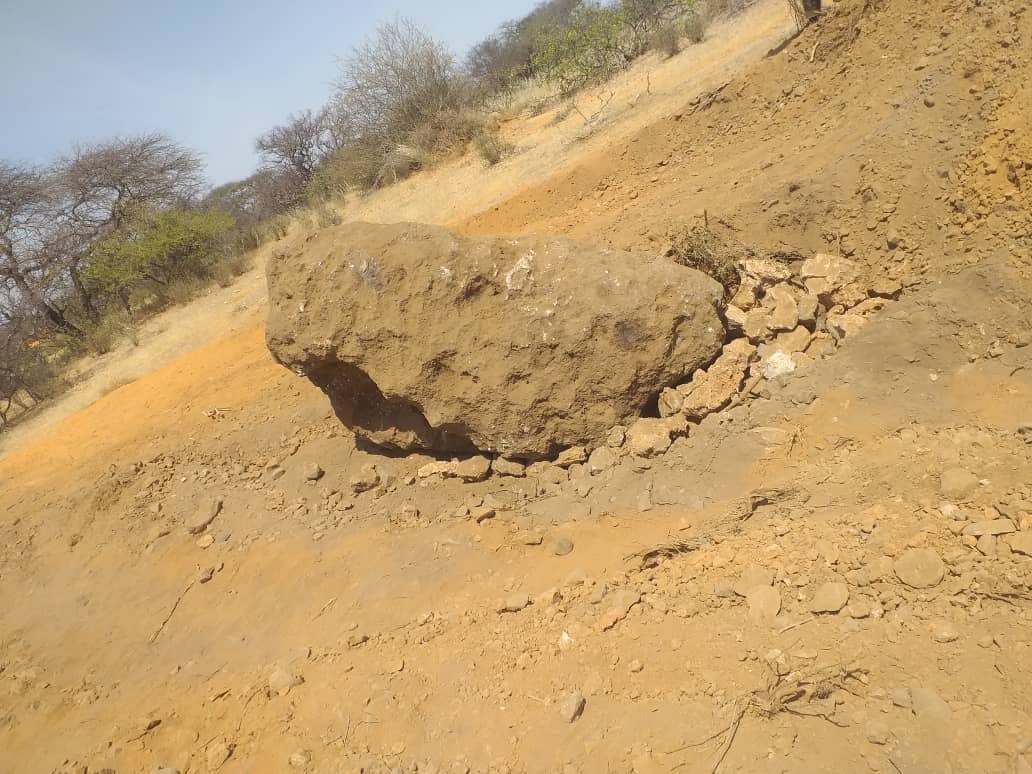29.11.2022
A meteorite expert from the University of Alberta was part of a team of researchers that discovered at least two new minerals never before seen on Earth.
Chris Herd, a professor in the department of Earth and Atmospheric Sciences and curator of the University of Alberta’s meteorite collection, was contacted a couple years ago about trying to classify a 15-tonne meteorite found in Somalia, the ninth-largest meteorite ever found.
“In the course of doing the classification — describing this new rock for science — I came across some inclusions, some potential different, interesting minerals inside the meteorite. What we’ve now discovered is there are at least two new minerals in this meteorite from Somalia that have never been discovered before.
“Most people in my profession will go through their career and not even find one new mineral. Here, just by virtue of examining this meteorite… we came across two,” Herd said.
“It was an exciting moment when my colleague Dr. Andrew Locock was doing the analysis. The first day he was looking at it, he came to me and said: ‘I think you’ve got at least two new minerals in there,’ based on their chemistry, based on the ratio of elements that are in there — in this case, iron, phosphorus and oxygen — you’ve got two new minerals, and that was really exciting.”
The two minerals came from a 70-gram piece that was sent to the U of A for classification. A potential third mineral is also being looked at.
“Whenever you find a new mineral, it means that the geological conditions, the chemistry of the rock, was different than what’s been found before,” Herd said.
“That’s what makes this exciting: In this particular meteorite you have two officially described minerals that are new to science.
“That’s my expertise — how you tease out the geologic processes and the geologic history of the asteroid this rock was once part of,” Herd said. “I never thought I’d be involved in describing brand new minerals just by virtue of working on a meteorite.”
This meteorite is about twice as dense as a regular earth rock, he said, and it’s magnetic.

Pictures of the meteorite found in Somalia and the sample analyzed at the University of Alberta. November 2022. Supplied: University of Alberta
The new minerals have been named elaliite and elkinstantonite. They were identified by Locock, head of the U of A’s electron microprobe laboratory, because each had been synthetically created before.
“These minerals have been synthesized in a lab by a group in France in the 1980s, so they were known to science in that regard,” Herd explained, “but it doesn’t get to be a called a new mineral until it’s found in nature.”
Elaliite is named after the meteorite itself because it was found near El Ali, in Somalia. Herd named the second mineral after Lindy Elkins-Tanton, a distinguished planetary scientist.
The research is being done with UCLA and the California Institute of Technology.
Herd believes more minerals could be found if researchers can obtain more samples but, researchers say the meteorite appears to have been moved to China and its future is unknown.
“The rock itself sat for at least several generations in the area in Somalia where it was found,” Herd said. “It was known by camel herders as a place to stop and sharpen their tools. It’s been removed from the site and actually removed from the country now, which is a bit unfortunate… It’s a gigantic stone that has potential cultural significance.”

The meteorite could also reveal clues about asteroid formation, the university said in a news release Monday.
“Intriguingly, the meteorite that elaliite, the group that it belongs to, may not actually be from the core of an asteroid, it might be from kind of a gigantic pond of originally molten metal near the surface of an asteroid,” Herd said.
“Whenever there’s a new material that’s known, material scientists are interested too because of the potential uses in a wide range of things in society,” he added.
“You never know what you’re going to find until you start to investigate these rocks in detail.”
The university is often asked to conduct meteorite classifications and does a couple dozen a year, Herd said.
Quelle: Global News

